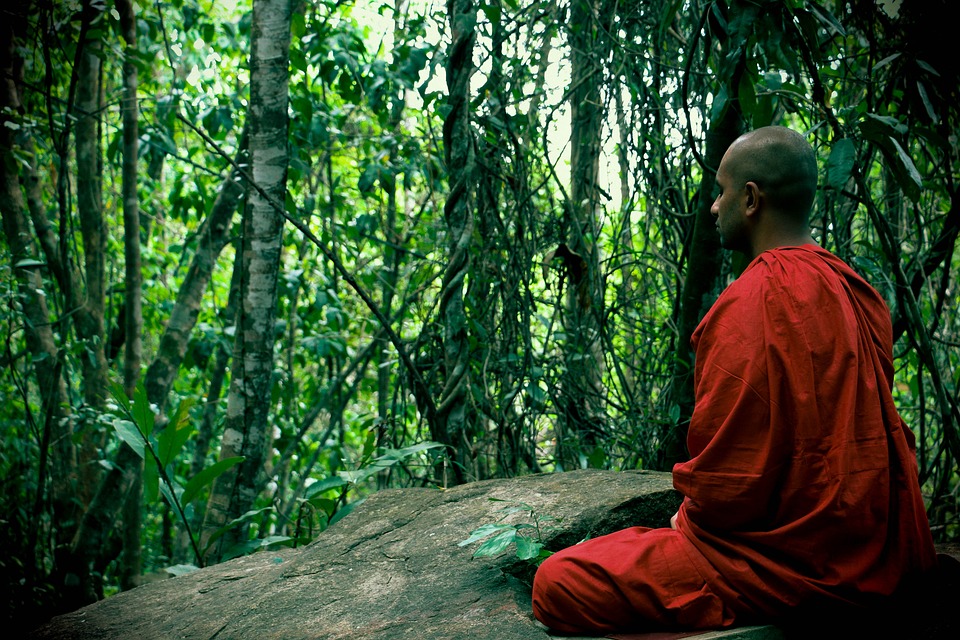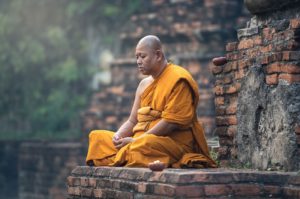Contemplation of feeling (“Vedananupassana”) is part of the 7th “insight” (Right Mindfulness or “Samma-sati”) on the Buddhist’s Noble Eight Fold Path to Enlightenment. The feeling is one of 4 concepts here. The others are contemplation on the body, on mind and mind-objects. All concepts explore the impermanence of reality, but the contemplation of feeling is particularly mindful of how easy (and self-destructive) it is to be lured into a tide of feelings. Feelings can be a major threat to good karma, and a major threat to the attainment of the Buddhist ideal, Nirvana.
Feeling must be identified
The Buddhist’s vision of reality is impermanence or “anicca”. All mental and physical phenomena are part of an unstable environment. Feeling (or “vedana”) must be recognized as a part of this impermanent landscape. Thereby, for a Buddhist, feeling must be identified, the source explored and then valued with knowledgable detachment when seeking enlightenment. In an absolute sense, the Buddhist must understand that there can only be feelings independent of others, personal ego or experience. “I feel” cannot exist.
 This 7th “insight” is far from being a dogmatic rule. It acts more like a knowing, guiding light, offering suggestions on how to separate the value of feelings from the purpose of daily existence; the purpose of breaking the “samsara” cycle of birth and re-birth; the purpose of claiming the ideal state of Nirvana. It asks that feelings be contemplated, reassessed and given a low status in the life cycle.
This 7th “insight” is far from being a dogmatic rule. It acts more like a knowing, guiding light, offering suggestions on how to separate the value of feelings from the purpose of daily existence; the purpose of breaking the “samsara” cycle of birth and re-birth; the purpose of claiming the ideal state of Nirvana. It asks that feelings be contemplated, reassessed and given a low status in the life cycle.
When sense-organ, object, and consciousness meet, feeling emerges. Emotions, the craving dimension of feeling may follow. Sounds, scents, and tastes may initially generate a neutral feeling, followed by pleasant or unpleasant reactions. Touch and pressure may ignite pleasant or unpleasant feelings. Gladness, sadness or indifferent feeling may be stimulated by mental impressions. In short, the Buddhist recognizes that feelings may appear to span the conditioned to involuntary or “unconditioned reaction” spectrum. For the Buddhist, all feelings have levels of conditioning and require first control, then separation from the life path.
Reflective Contemplation
The contemplation of feelings may be conducted within the experience of the feeling or reflective. Reflective contemplation acts like personal learning from history. It is a kind of “learn from your mistakes” and move on.
Notice there is no judgment when “errors” are made. The learning and the progress are all driven by the experience, the attitude and the will of the individual.
Worldly feelings are passing and have no real substance. Even worldly happiness, though pleasant at the time, becomes “dukkha” or suffering because it cannot last. But, to the Buddhist, one particular spiritual feeling should be valued. Great joy, happiness or exhilaration may be felt during a secluded, meditation state or “jhanas”.
The weakest link in the chain of birth and re-birth is feeling. The contemplation of feeling, harnessing its control of life, gives the Buddhist calm insight into the workings of life and more opportunity to claim that ideal state, Nirvana.






